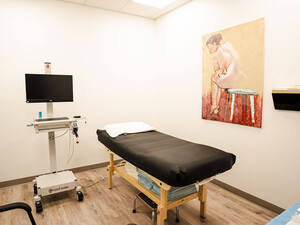Skin Screening Exam
The Skin Screening Exam is used for the early detection of melanoma and non-melanoma cancer in high risk individuals. The following persons have an increased risk for developing skin cancer:
- Caucasian males over 50 years of age
- Patients with a strong family history of melanoma
- Organ transplant patients on immunosuppressants
- Patients with multiple nevi (50+) or with some atypical ("dysplastic") nevi
- Patients with a personal history of skin cancer
- People with recurrent episodes of sunburn
- Persons with a fair complexion (blonde or red hair, light eye colour) and a high incidence of freckling

A head-to-toe Total Body Skin Exam is done with the aid of a dermatoscope. The skin is examined both clinically for any suspicious lesions and dermatoscopically. The usefulness of the Skin Exam comes with the addition of dermatoscopy. This has been proven to pick up skin cancer earlier and improve specificity (meaning less unnecessary procedures) and sensitivity (meaning earlier detection of skin cancer) compared to a naked eye exam alone.
During the exam, lesions may be identified that need further interventions (e.g. biopsy or cryotherapy) or follow-up on a short-term (1-3 month) or long-term (6 months to 1 year) basis. For record keeping purposes or for comparison in follow-up we would usually photograph these lesions.
Following the exam, we would discuss the findings and go over any questions. Some procedures might be performed the same day (e.g. cryotherapy with liquid nitrogen) but for the most part a follow-up appointment is needed for interventions.










